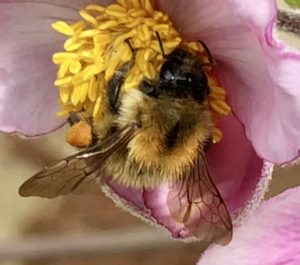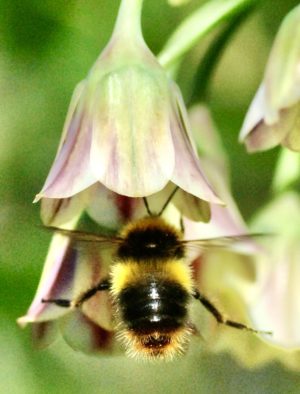Bumblebee stress.

If bumblebees are exposed to heat stress during their development (they go through four stages : egg / larva / pupa / adult or imago) their bodies develop asymmetries. The wings in particular are affected, so the left and right wing are shaped differently. This asymmetry can be measured and has been used by a team from the Natural History Museum and Imperial College to investigate how changing climate over time has affected bees.
They investigated four species of bumblebee [Bombus hortorum, B. lapidarius, B. pascuorum and B. muscorum] in museum collections that dated back to 1900 CE. The bees were ‘held’ in collections at various museums [Natural History Museum (London), National Museums Scotland (Edinburgh), Oxford University Museum of Natural History, Tullie House Museum and Art Gallery Trust (Carlisle) and World Museum (Liverpool)].

Landing
Using digital images of many bees collected at different times over the last 130 years, they measured the asymmetry of their wings. The data from these measurements were then correlated with information about annual rainfall and mean annual temperature in the year the bee was collected. It became clear that
- wing asymmetry was associated with hotter and wetter years; and that
- each of the bee species displayed greater asymmetry, hence stress, in the second half of the twentieth century.
As hotter and wetter conditions are predicted to become more frequent with climate change, it is probable that bumblebees will experience greater stress, indeed they may be in for a ‘rough time’ as this century progresses.
Apart from investigating wing asymmetry, the team used a leg from some of the historical specimens to analyse the DNA / genetic make-up of the bumblebees (B. lapidarius). With the DNA data from these bees (dating aback over a century), the Natural History Museum and the Earlham Institute were able to construct a ‘reference genome’ - a standard against which they can see how bee genomes change over time. This may ultimately reveal how bees are adapting (or not) to a changing climate / environment.
Comments are closed for this post.
